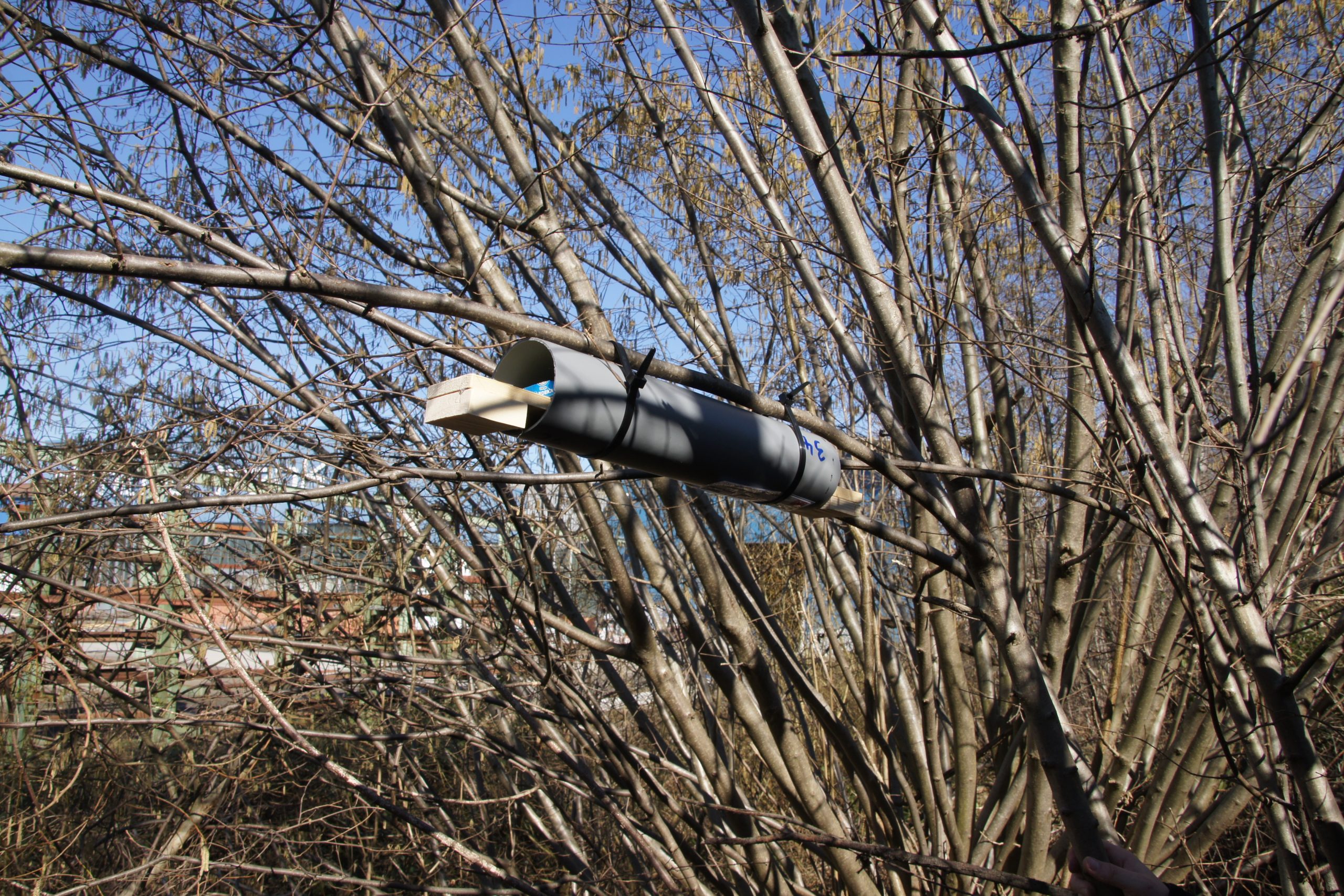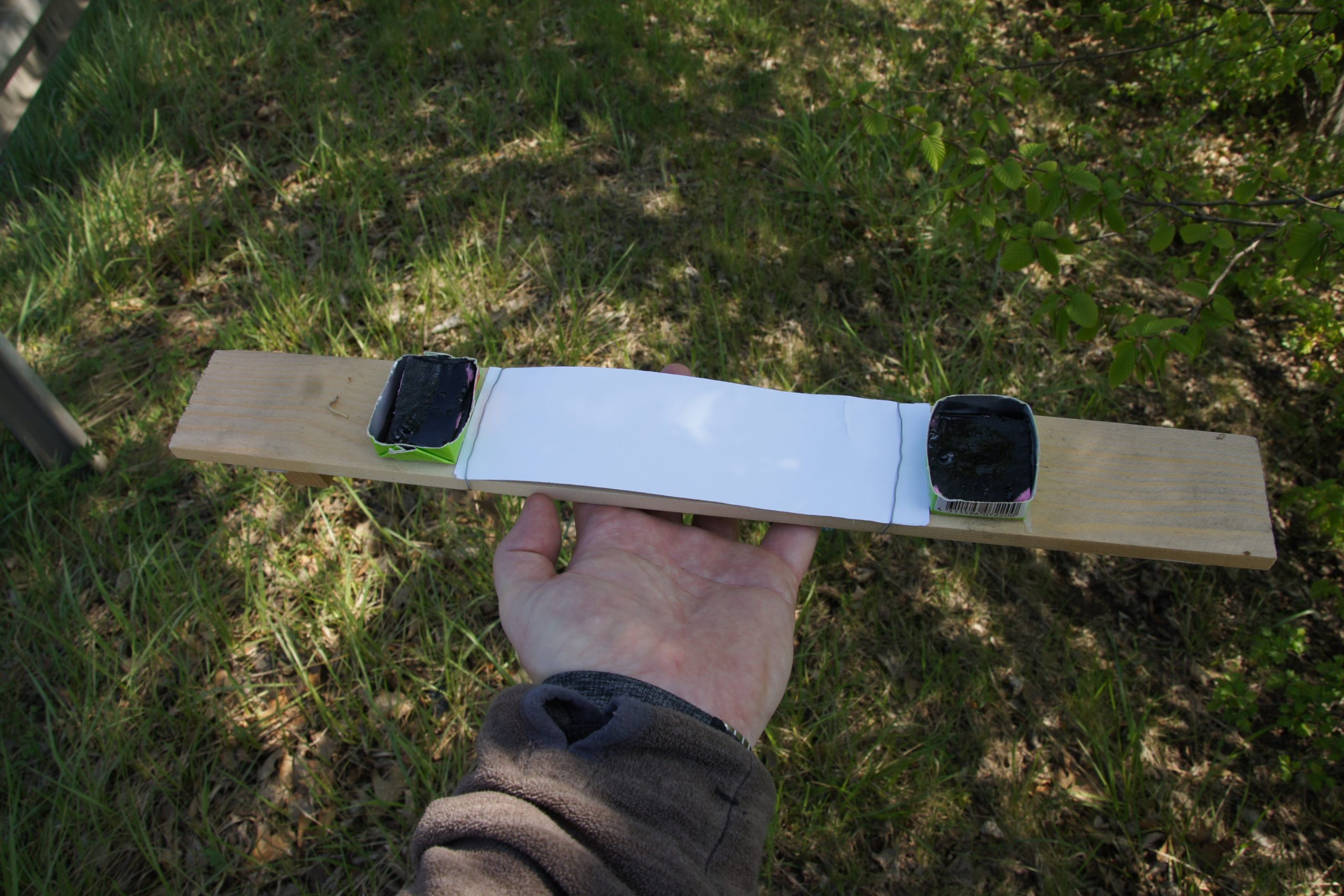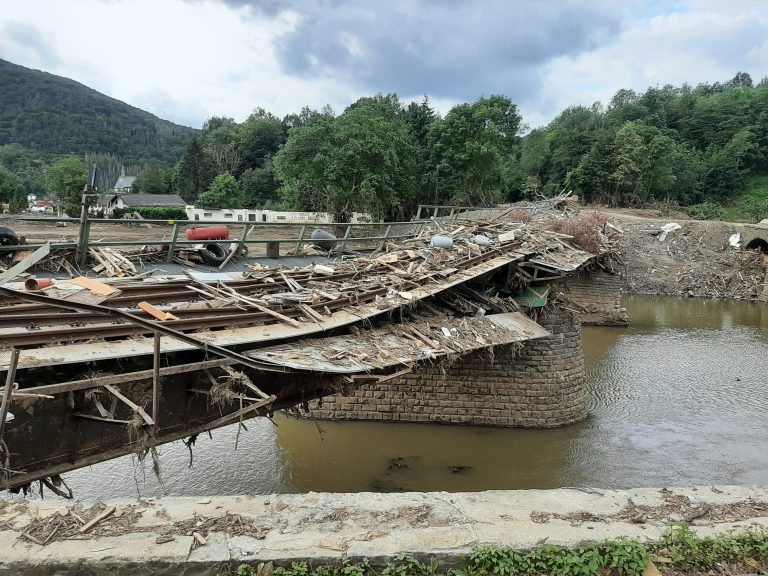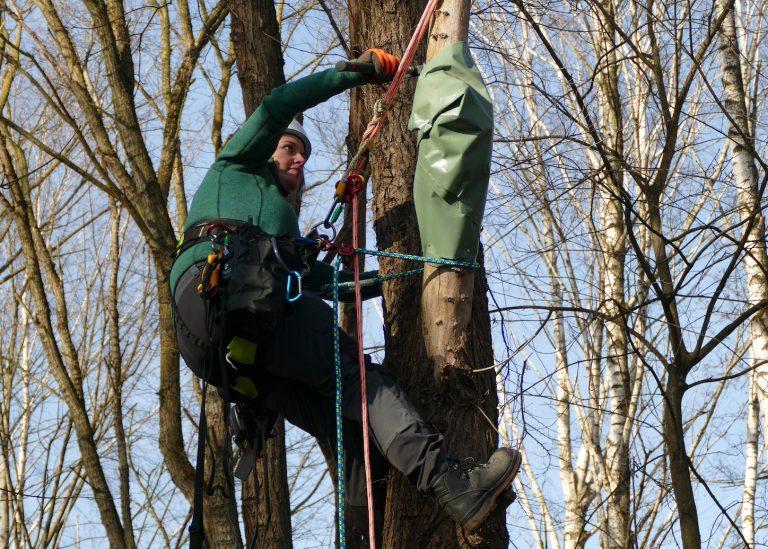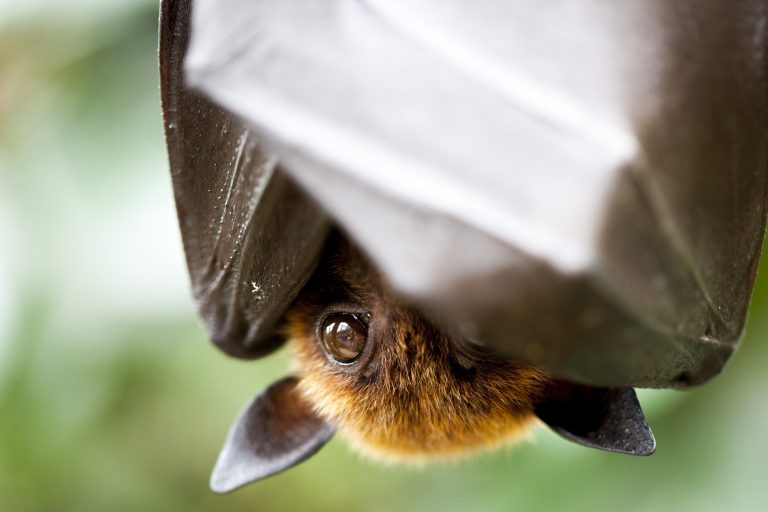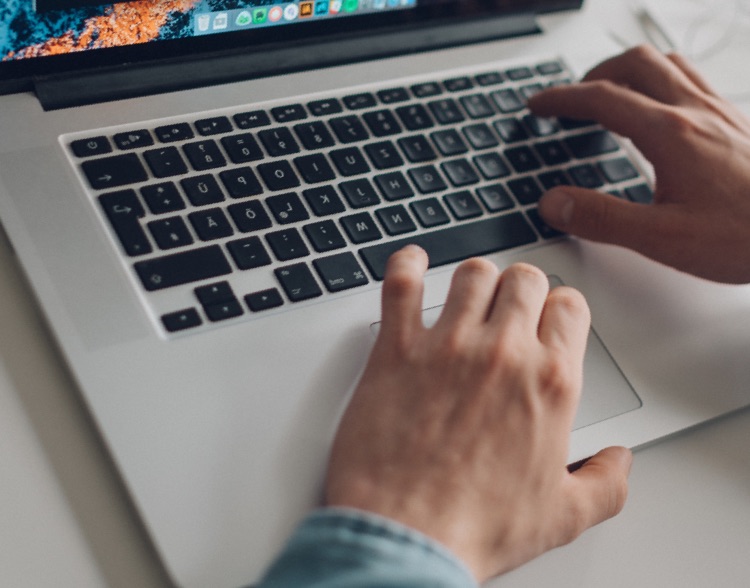Last year, DB E&C was commissioned to map animal habitats on land where two road bridges were to be replaced in Bebra, Hesse. In order to track down one furry inhabitant in particular, our experts of Environmental & Geoservices came up with a number of clever ideas.
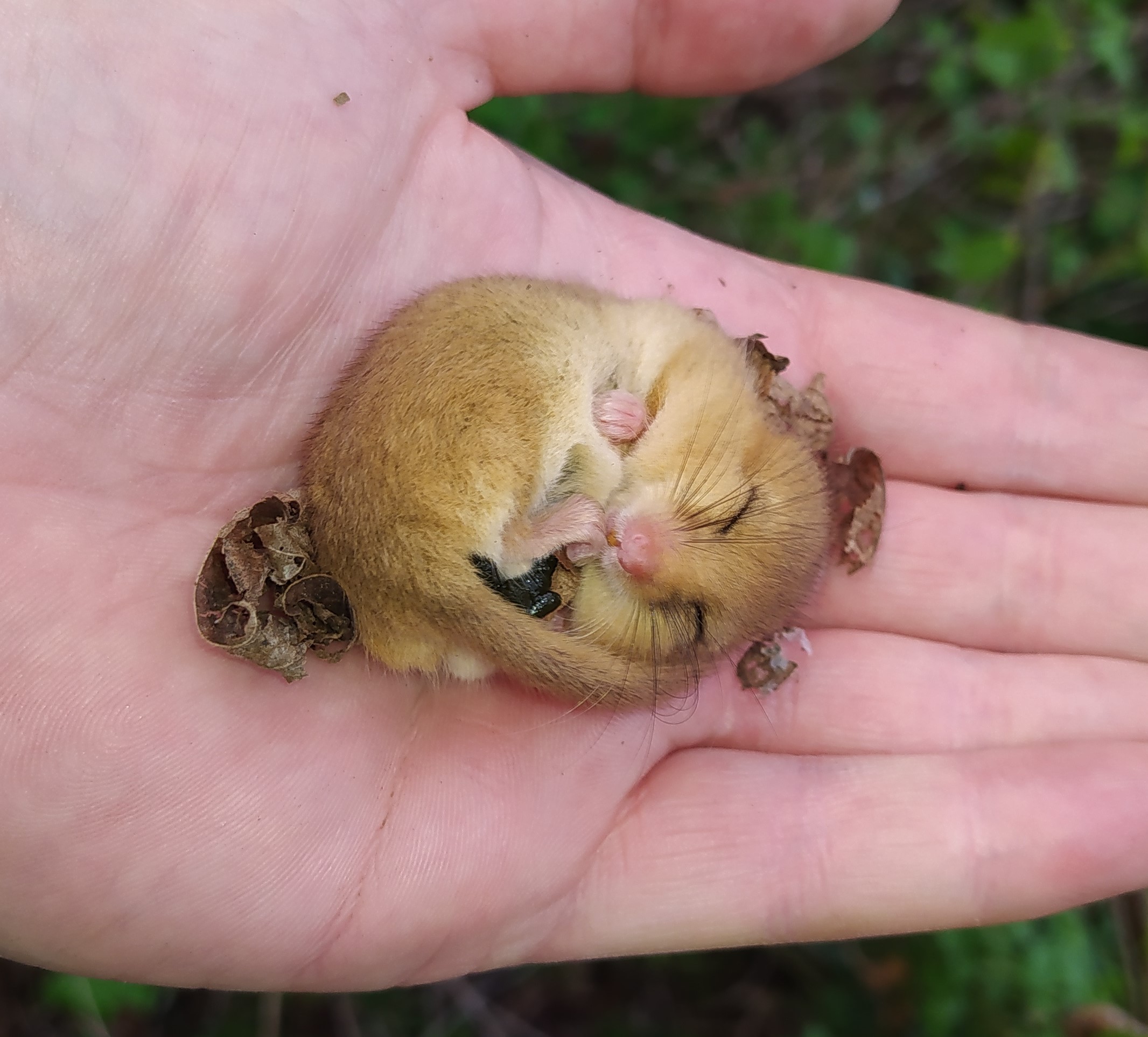
Contact
DB Engineering & Consulting
EUREF-Campus 14
10829 Berlin
Germany
Last year, in the northwest of the small town of Bebra in the German state of Hesse, the Environment & Geoservices team undertook a meticulous search for clues so that they could gather well-founded evidence about the occurrence of a species that is endangered: the hazel dormouse. The road and traffic management organization Hessen Mobil, when planning the new replacement of two road bridges, had commissioned DB E&C to conduct a detailed survey of existing animal habitats on the land that would be affected. While previous analyses had shown that there were populations of dormice living in the vicinity of the project site, it was unclear just how many of the nocturnal animals there were.
From nest tubes to footprint tunnels
To find this out, our environmental experts installed fifty nest tubes and twenty nest boxes in the study area at the beginning of March 2022, before the dormice were due to come out of hibernation. They checked the tubes to see if any animals were inside five times between April and November. The team had also made fifty footprint tracking tunnels in advance, which they would use to capture the animals’ movements. They put these in place in March too. Prior to the reproductive periods in May and September, the paper and non-toxic ink in each of the footprint tunnels were replaced twice and then checked after three to ten days for signs of dormouse activity. The paper strips were analyzed with the help of the appropriate literature and identification aids.
 Hazel dormouse family sleeping in a nest
Hazel dormouse family sleeping in a nestHazel dormouse family sleeping in a nest  Example of a dormouse box attached to a tree
Example of a dormouse box attached to a treeExample of a dormouse box attached to a tree  Hazel dormouse sitting in tree
Hazel dormouse sitting in treeHazel dormouse sitting in tree 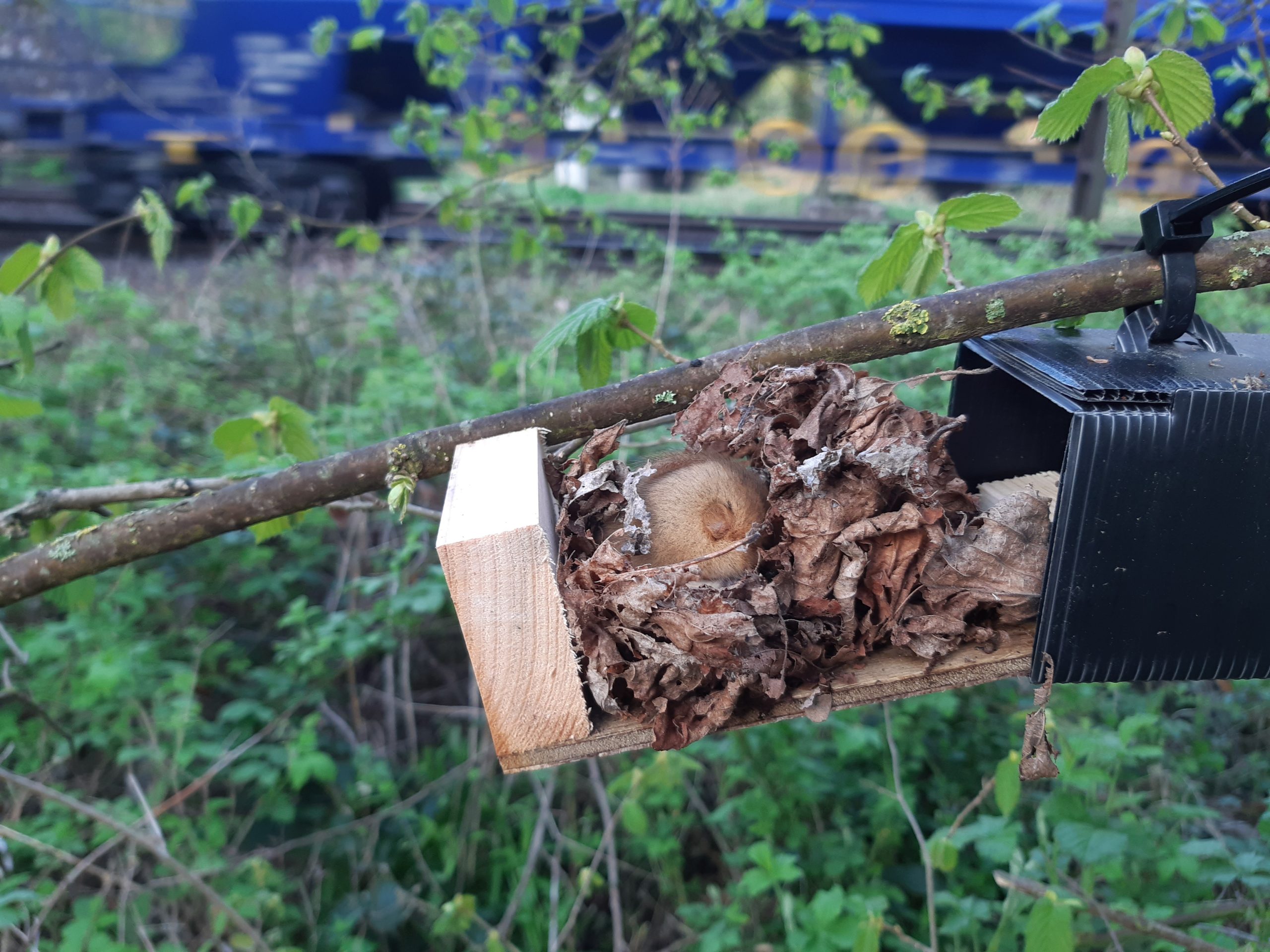 A dormouse in a nest tube
A dormouse in a nest tubeA dormouse in a nest tube 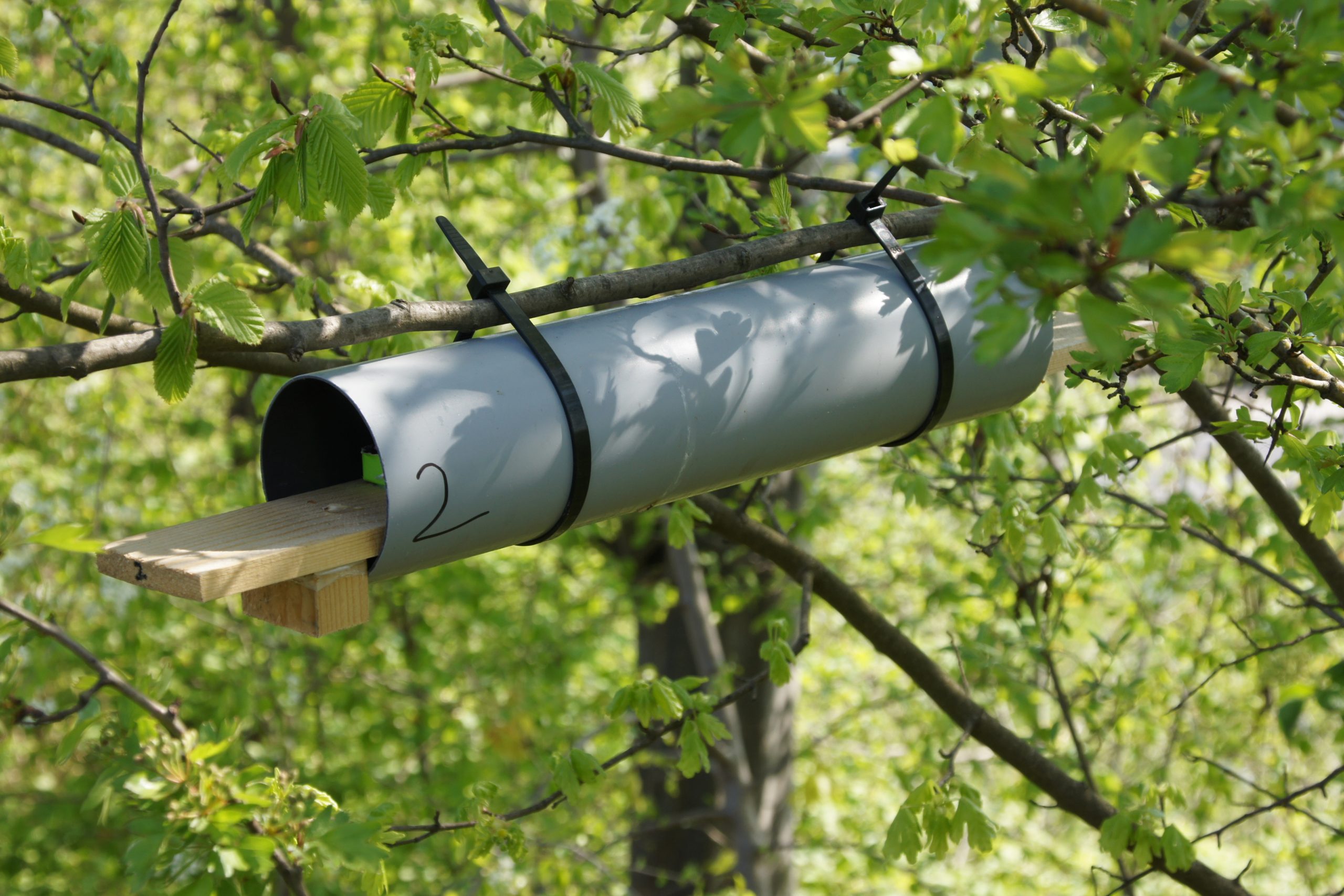 Footprint tunnel in place
Footprint tunnel in placeFootprint tunnel in place 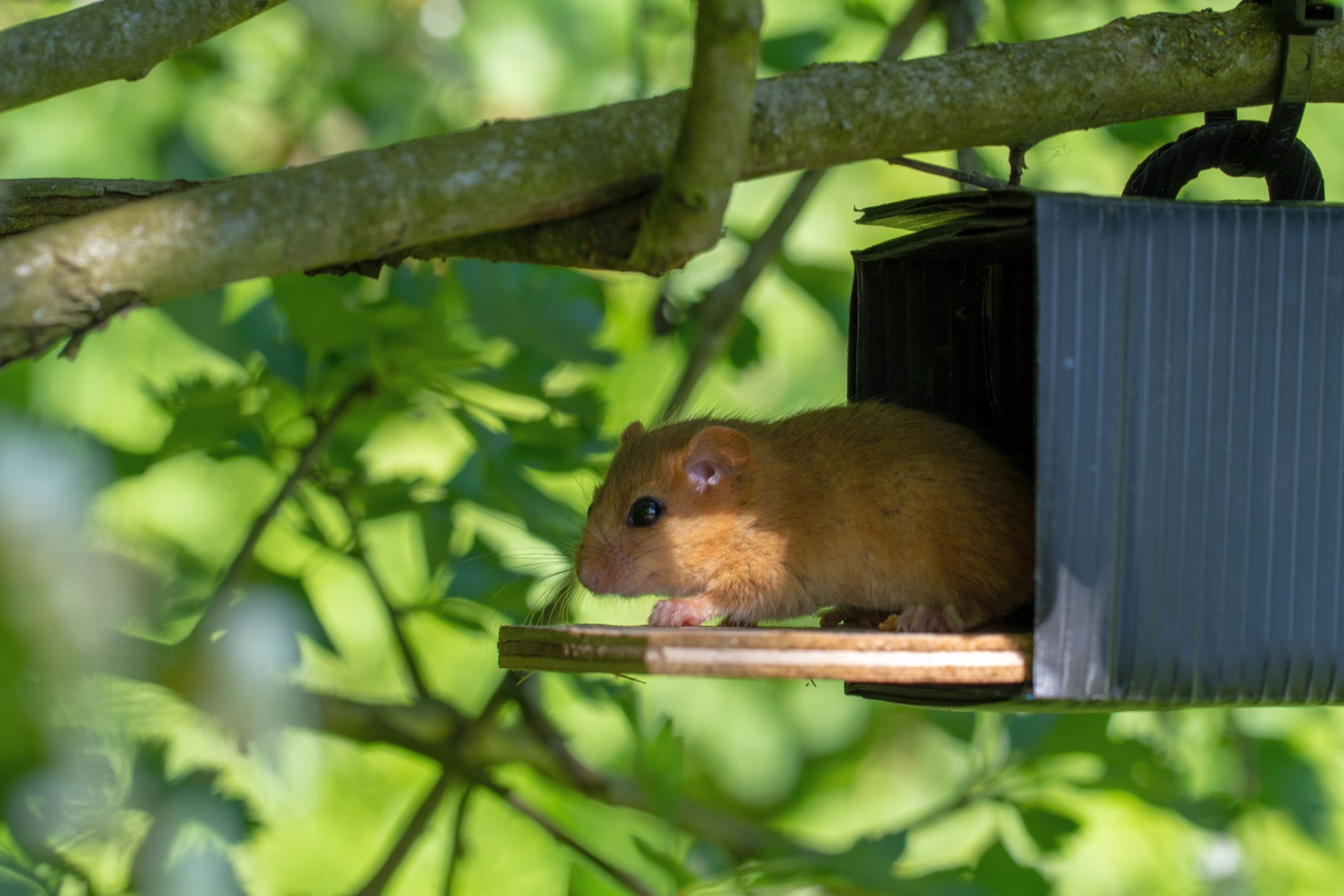 Hazel dormouse looking out of a nest tube in tree
Hazel dormouse looking out of a nest tube in treeHazel dormouse looking out of a nest tube in tree
Clear results
When the team inspected the nest tubes, nest boxes and footprint tunnels, they revealed that only certain areas along the embankment in the study area were colonized by the hazel dormouse. Typical dormouse nests were found in twenty-one of the fifty tubes set up, four of the twenty boxes had nests in, and dormouse movement was evident in forty-three of the fifty footprint tunnels. These results provided a solid basis for further planning in the construction project with regard to environmental restoration measures that needed to be taken.
Made specially for the purpose: footprint tunnels
They successfully tested the use of their dormouse footprint tracking tunnels in a pilot project in Bebra. The tunnels consist of a 33 cm long plastic tube with an inner diameter of 7 cm and a wooden board that fits inside. This is 48 cm long, 6 cm wide and 1 cm thick. The wooden board protrudes from the plastic tube at both ends. Smaller pieces of wood are affixed to the underside of the board at the ends to stop it sliding out of the tube.
An ink pad is fixed to the wood at either end of the tube. Each ink pad is a small container (here, a cut-off juice box) that holds a sponge soaked with vegetable oil and charcoal. When a dormouse runs through the tunnel its feet pick up the natural ink and leave marks on the paper, which is attached to the wooden board with wire fasteners between the two ink pads.
